Halo Infinite Review
- Halo gameplay feels as good as ever
- Campaign is solid, with good gameplay and story
- Multiplayer is a lot of fun
- Music and voice acting top tier
- Multiplayer monetization needs improvement
- Multiplayer needs more playlists
- Campaign costs a little too much
After a longer-than-expected wait, Halo Infinite is here at last. Well, it would be better to say that Halo Infinite is now complete since the free-to-play multiplayer enjoyed a surprise release last month. The single-player campaign is out later this week as a separate release, completing Halo Infinite and giving us the long-awaited continuation of Master Chief's story. I've been spending a significant amount of time with both halves of Halo Infinite over the past few weeks, and even though the finished package may not quite reach the series' previous peaks, I think it's safe to say that Halo is back.Microsoft provided access to Halo Infinite's campaign to me for this review
The campaign
Halo Infinite's campaign is a pretty big departure for the series. While the campaigns in previous Halo games consisted of a series of linear missions, Halo Infinite is billed as a "semi-open world" game. If that phrase is confusing to you, you're not alone there, because I went into Halo Infinite with a rather poor grasp on what to expect.
Not long after starting the campaign, I realized that "semi-open world" is actually the perfect phrase for it. Halo Infinite's campaign takes place on the mysterious Zeta Halo, which players are free to explore at various points throughout the game. As 343 Industries revealed in the lead-up to Halo Infinite's release, players can do a variety of things in the open world, all centered around strengthening the UNSC's presence on Zeta Halo.
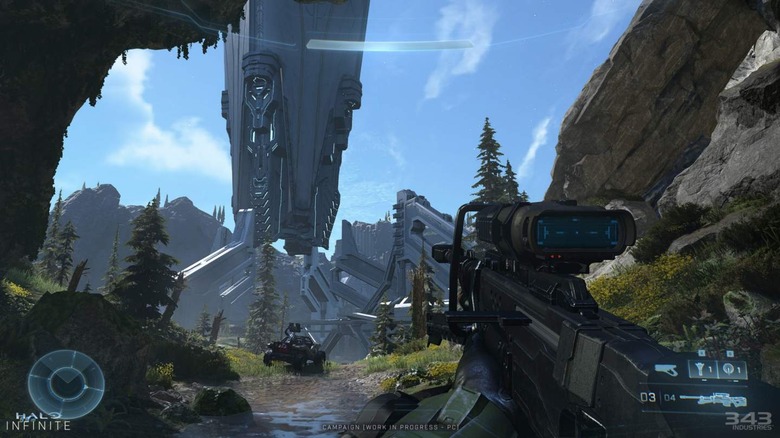
These objectives include reclaiming USNC forward operating bases that have been taken over by The Banished, a Covenant splinter group that serves as Halo Infinite's primary antagonists. Players can also hunt high-value targets, aid UNSC soldiers in need, find Spartan Cores to upgrade their abilities, and even unlock cosmetics to use in multiplayer.
These open-world segments where the player is free to explore split up the more linear sections of the game that drive the narrative forward. Those linear sections almost feel like dungeons, for lack of a better phrase, as they often have you delving into the massive structures that dot Zeta Halo's landscape.
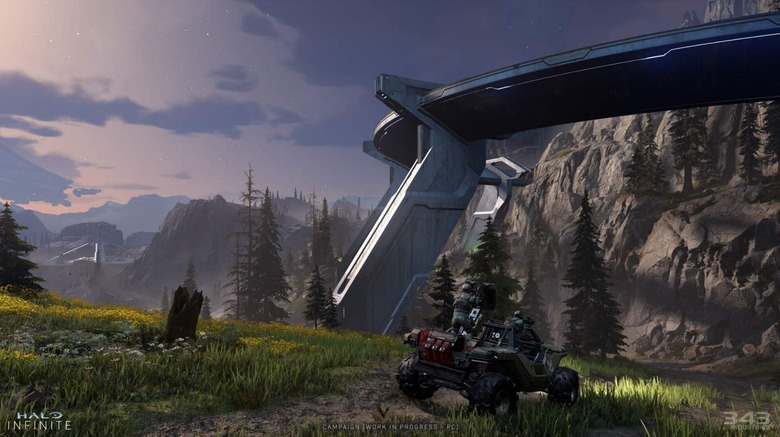
So yeah, "semi-open world" fits the feel of Halo Infinite perfectly, and that approach to design makes it stand out from its predecessors. It feels like Halo reinventing itself, sort of in the way Breath of the Wild reinvented The Legend of Zelda (though not nearly as dramatic).
The open-world objectives are fun enough, but they did start to feel repetitive as I got deeper into the campaign. Forward operating bases have a practical use as fast travel and resupply points, while completing any objective in the open world will earn you Valor. Valor, in turn, unlocks weapons and vehicles you can obtain at forward operating bases. It's a good system but, of course, it's not like resupplying at a FOB is ever necessary considering that enemies serve as an endless supply of weaponry too.
Master Chief also has a number of armor abilities that can be upgraded with Spartan Cores, which are scattered around Halo Infinite's open world. Among those items is the Chief's new Grappleshot, which has been featured in a lot of marketing for the game. Some of these abilities are more useful than others, but the Grappleshot really stands out among them just because of its versatility. Not only can you use it to swing around the open world and battlefields (which is a lot of fun), but you can also use it to grapple enemies or grab weapons from far away.
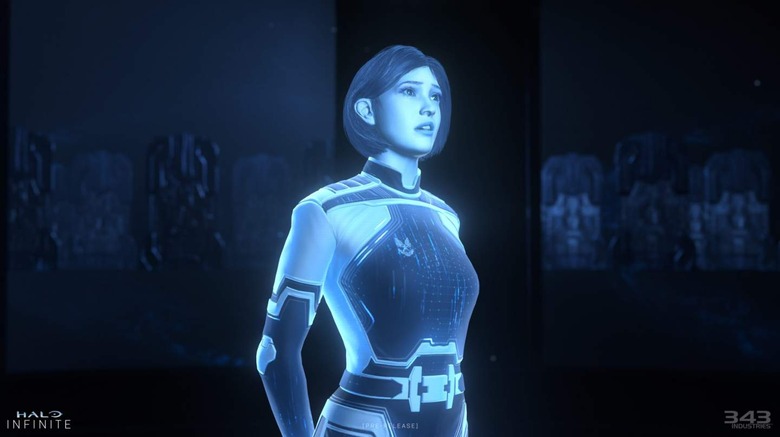
As far as the story is concerned, I won't get into any specifics here so those who wish to go in unspoiled can do so. Halo Infinite is the next entry in the "Reclaimer" saga (which is no longer just a trilogy, it should be noted) and also something of a soft reboot for the series, and it manages to feel like both.
I feel I should point out that I haven't played Halo 5: Guardians or Halo Wars 2, which both are direct lead-ins to this game. The last Halo campaign I played was Halo 4, and though that was a long time ago, Master Chief's narrative with Cortana sticks out as a high point, while I remember the arc with the Didact being convoluted. I've heard some complaints about Halo 5's narrative as well, and after watching some videos recapping it, I can understand why some may have felt let down.
There's still a lot happening in Halo Infinite's campaign, but I wouldn't say it was a hard-to-follow game. The story is straightforward enough and, in that sense, it does feel more like the Halo games in the original trilogy to me. I thought the story was good and surprisingly engaging even though I'm not as tuned in to the larger Halo plot as I was back in the Halo 3 and Halo: Reach days. I would expect someone who is new to the Halo franchise to be completely lost from the get-go, but even with just a partial familiarity with the Reclaimer saga, I was able to understand what was happening.
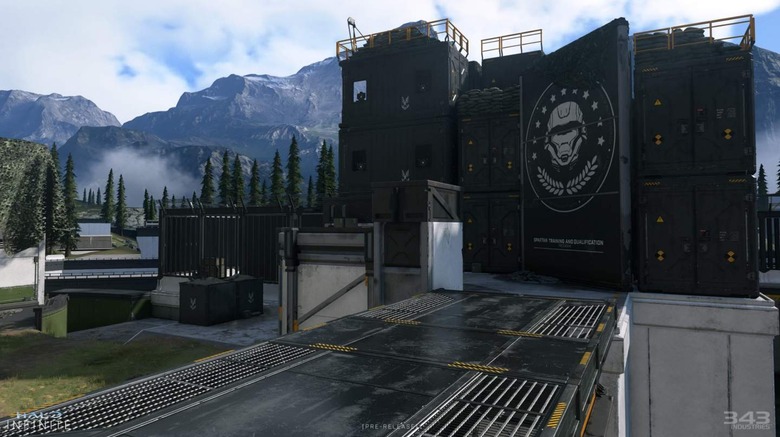
I think the writing in this game is solid, with good characterization for many of the main characters and some witty dialogue in places (like the trash talk from Grunts when they see Master Chief bite it). Master Chief, of course, is a man of few words as always, but the characters who surround him are well-written for the most part.
There are some enemies who I feel maybe didn't get as much screen time as they deserved, but the main antagonists get some good moments. Even Chief gets a few moments that threaten some depth of character, and it's nice to see those as the Halo series gets older. Across the board, the voice acting in this game is fantastic. In fact, the voice acting is easily one of the best things about Halo Infinite, with stellar performances from just about everyone.
The graphics, on the whole, look great, and to my eye, they're a major upgrade over the graphics we saw in the campaign demo a year ago. I played Halo Infinite on a PC with an RTX 3070 and it looked fantastic. The look of Halo Infinite reminds me more of early games in the series than Halo 4 or 5 – more colorful with perhaps less focus on looking ultra-lifelike (though the character models still look great and detailed).
And the music. Oh baby, the music. Halo has always had a strong music game, but the soundtrack in Halo Infinite is excellent. Halo Infinite is one of those games that proves music doesn't just need to be a backdrop, but that it can elevate gameplay. When you're fighting off hordes of Banished and that heroic music kicks in, you feel completely unstoppable. The composers of Halo Infinite did an excellent job of taking the series' famous themes and updating them for this game. Hats off to them, because the music really ties the whole package together.
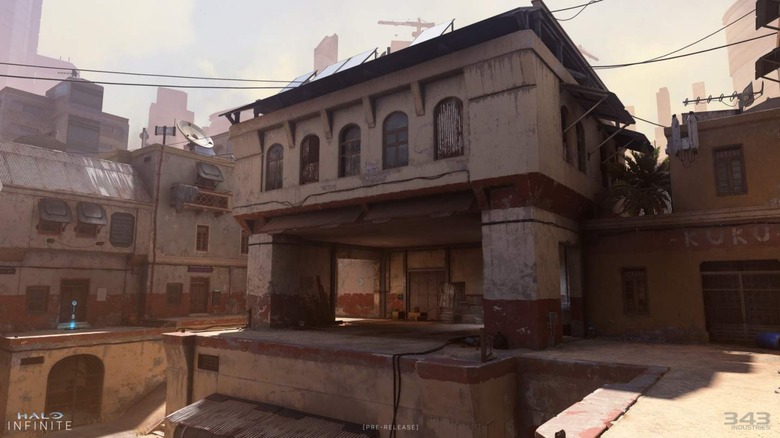
Finally, we come to the gameplay, which is the most important part. Like the multiplayer, Halo Infinite nails the gameplay. Whatever shortcomings the open-world might have, it lends itself very well to massive battles in large, open spaces, and those are a lot of fun. Many times throughout the Halo campaign, it feels like it's just you against an entire army, which adds intensity to the encounters. I spent some time playing on both normal and heroic difficulties, and while heroic will definitely put your skills to the test, normal is no slouch of a mode. Some of the boss battles, in particular, will probably claim at least a few lives from players, even on normal.
Halo Infinite feels like Halo, and even though that's kind of a dumb thing to say, anyone who has played the original Halo trilogy will understand what I mean once they sink their teeth into the campaign. The Grappleshot goes a long way to shaking up combat, and of course, the fact that there are often vehicles and massive power weapons laying about on battlefields means that many battles become spectacles full of explosions and gunfire. Halo is at its best when it makes you feel like a total badass, and there's no shortage of those moments in Halo Infinite.
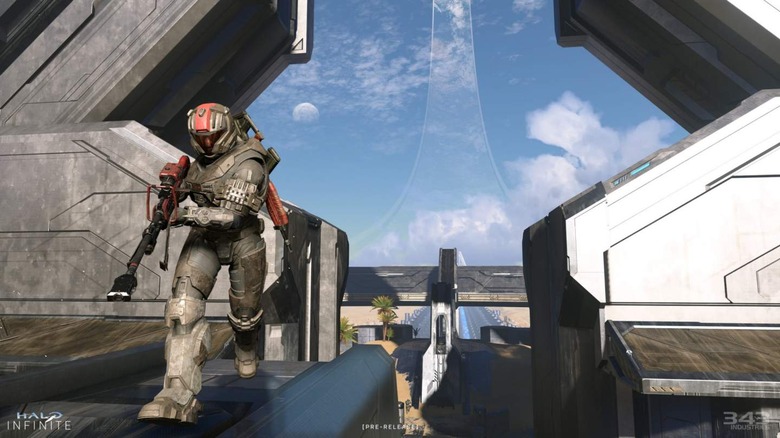
Is the campaign worth $60? While it is longer than the Halo campaigns of the past, a lot of that is because of the open world. I would say that most players can probably expect to spend between 15 and 20 hours on the campaign if they complete a decent amount of the side content. 100% completion could bring total game time to closer to 30 hours, but I haven't attempted to finish all of the side content yet, so that's just an estimate.
While the campaign is good and most Halo players will want to take it for a spin at some point, there's an important consideration here in that Halo Infinite doesn't have campaign co-op at launch and won't for some months yet. It seems the tentative plan is to add campaign co-op either at or around the launch of multiplayer season 2, which is currently slated for March 2022. I have a feeling that co-op in Halo's semi-open world will be a lot of fun, so it might be worth waiting for that before taking the plunge.
There's also the fact that you don't necessarily need to pay $60 for Halo Infinite's campaign because it will also be available through Xbox Game Pass. If you're a Halo fan, it's well worth subscribing to Xbox Game Pass for a month and seeing what the campaign has to offer. As a $60 purchase, Halo Infinite's campaign is a little difficult to recommend, but on sale or through Xbox Game Pass, it's an easy recommendation. I look forward to seeing how 343 expands on these concepts in the next Halo game because Halo Infinite certainly proves they can work.
Multiplayer
This section will be a bit shorter than the section on the campaign because I've already talked a lot about the multiplayer, and my feelings mostly remain unchanged. I like Halo's multiplayer a lot – the gunplay feels really good to me and I thankfully haven't encountered the desync issues that have been making the rounds lately – but some factors are surrounding the multiplayer that temper my excitement for now.
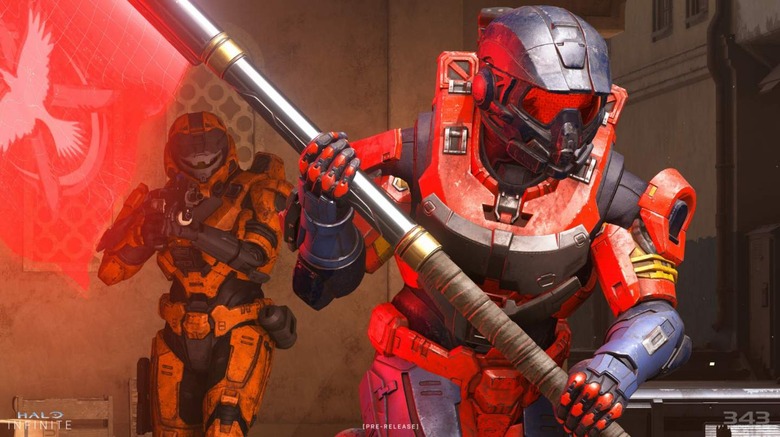
For starters, I think most of the maps are good, and I don't have any major gripes with any of them. I think the main problem with the map selection is that there aren't enough of them at launch. I know that will change as time goes on, but it feels like both Big Team Battle and 4v4 could use a couple more maps each to keep the rotation feeling fresh from match to match.
The gameplay has also been very solid in my experience. There have been players reporting issues, but outside of some random crashes, I haven't experienced many of the most severe ones myself. I have crashed to desktop a handful of times in the middle of a match, and that is beyond frustrating, especially since there's no rejoin option. I understand why there's no rejoin because 343 would rather fill a vacant spot quickly instead of leaving one team down a man while the dropped user reconnects, but when you're playing with friends, it's never fun to crash and then have to wait until their game is over because you can't rejoin.
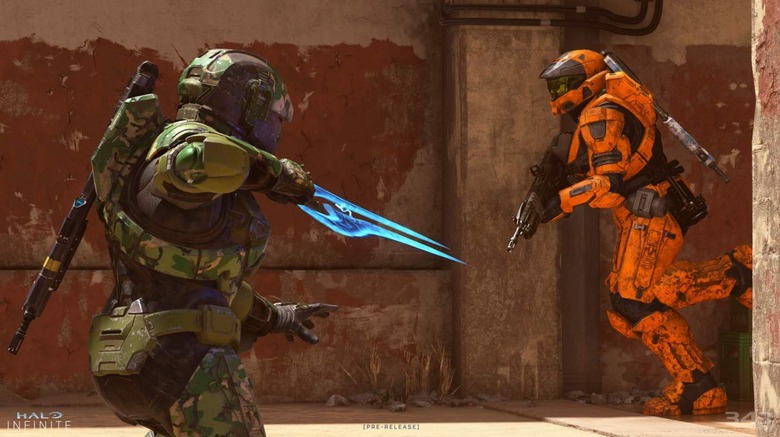
My biggest complaint about the multiplayer – aside from the problems with monetization, but we'll get to those – is the fact that there aren't enough playlists. I said in my first impressions post that I'd really like a separate playlist just for Slayer. I also lamented the lack of SWAT, but in the time between then and this review, 343 has confirmed that both of those are coming in future updates. I think standalone Slayer should have been in the game at launch, but I'm okay with knowing that it's on the way.
The biggest issue with Halo Infinite is its monetization. For those who don't know, Halo Infinite multiplayer is free-to-play but monetized with a premium battle pass and a cash shop where players can buy skins and cosmetics outright, much like Fortnite. When it released a few weeks ago, players complained that battle pass progression was too slow, and it was. 343 has shipped a couple of changes to the challenge system to speed up progression, and they've largely worked. I still don't know if the problem of battle pass progression has been completely solved, but it's certainly better than it was.
Halo Infinite is also greedy. The free battle pass is a little underwhelming; there are some unlocks of note in there, but it mostly consists of challenge swaps. The stuff in the in-game shop seems terribly priced, too, with skins going for $20 a pop. At half that price, I might consider picking up a skin every now and then, but $20 for a skin in Halo Infinite is laughable in a universe where games like Stardew Valley and Terraria exist for less than that.
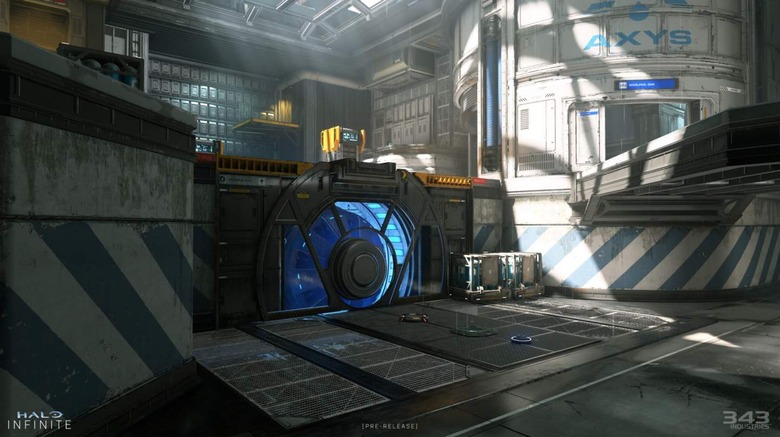
Add to that the fact that every little piece of armor has been split off into its own product and Halo Infinite's monetization doesn't feel great – even armor color schemes have to be unlocked, which seems like a step too far. This type of micro-monetization feels like something you'd see as a satire of free-to-play monetization, but Halo Infinite is serious in offering it.
These things can and should be changed because it feels like an executive who hasn't done their own shopping in 30 years came up with this strategy. I understand that going free-to-play means that a game must make its money elsewhere, and I have no problem if Halo Infinite wants to offer a premium battle pass and a skin shop side-by-side. It's the stinginess of offering things like knee armor, wristguards, and color schemes as individual unlocks alongside the greediness of charging $20 for an armor pack – which rotates every week, by the way – that leaves a bad taste in my mouth and tarnishes an otherwise excellent multiplayer experience.
Halo Infinite verdict
There's a lot to love with Halo Infinite. The story the campaign tells is a good one, the multiplayer offers a solid foundation that will soon be expanded, and the gameplay across both is on point. The frustrations, as is so often the case with major releases these days, mostly lie outside the actual game and have more to do with the way the game is offered.
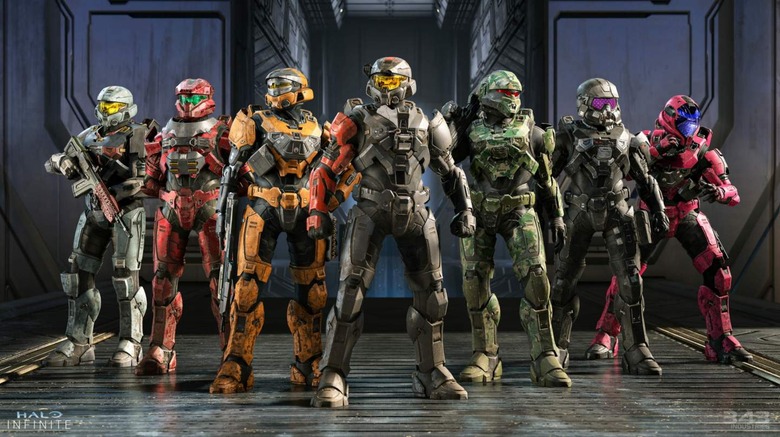
Charging $60 for the campaign on its own seems like a little much. The campaign is good, but I feel it would have been better to charge $30-$40 for the amount of the content that's there. I have a feeling Microsoft would never consider charging less than $60 for anything related to its flagship franchise, but the fact of the matter is that the campaign isn't going to be its cash cow anyway – the thing that will make Microsoft the most money is multiplayer. Knowing that multiplayer is going to rake in cash, would have killed the big M to cut the price on the campaign a little bit?
Once you get past all the monetization nonsense associated with multiplayer, you'll see there's a good core there. It needs more maps and modes, but what's there already is fun to play and largely well-designed. I look forward to spending a lot more time with Halo Infinite's multiplayer in the future and playing through the campaign a few more times when campaign co-op arrives. I'm beyond excited that 343 has been listening to fan feedback and implementing changes based on it, and that makes me feel like Halo Infinite multiplayer has a bright future ahead of it.
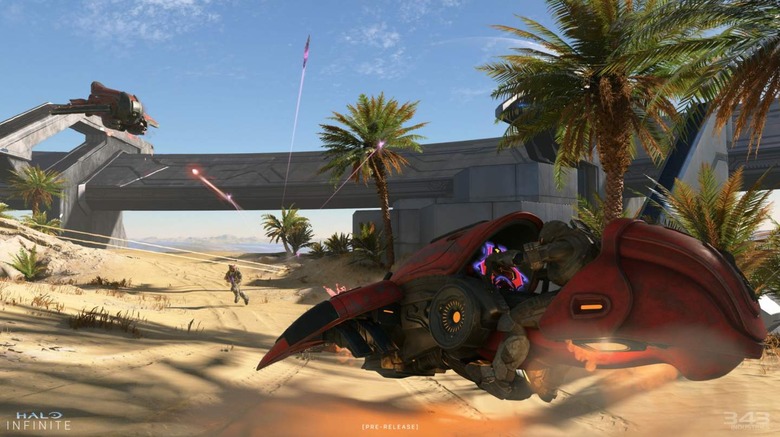
I think this is a solid accomplishment for 343 Industries. Halo 4 and 5 have long been seen as the lesser entries in the Halo franchise, but with Halo Infinite, I think we're seeing 343 come into its own as keeper of Halo and begin to offer games that can stand alongside the original trilogy.
